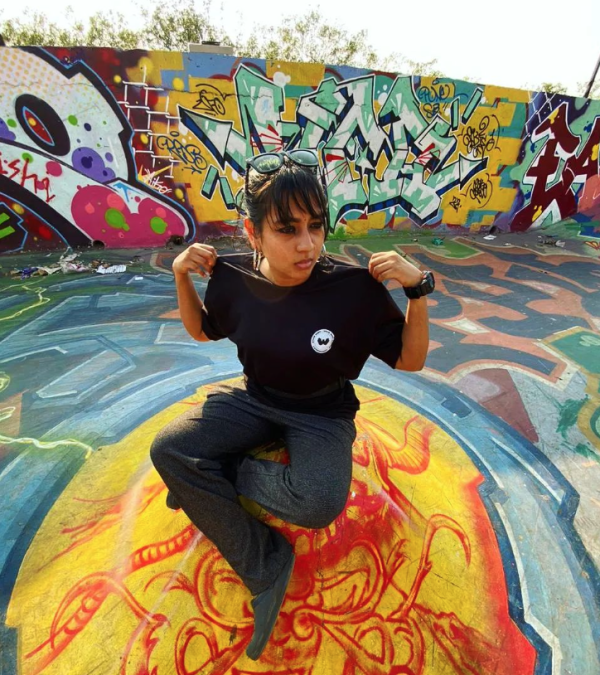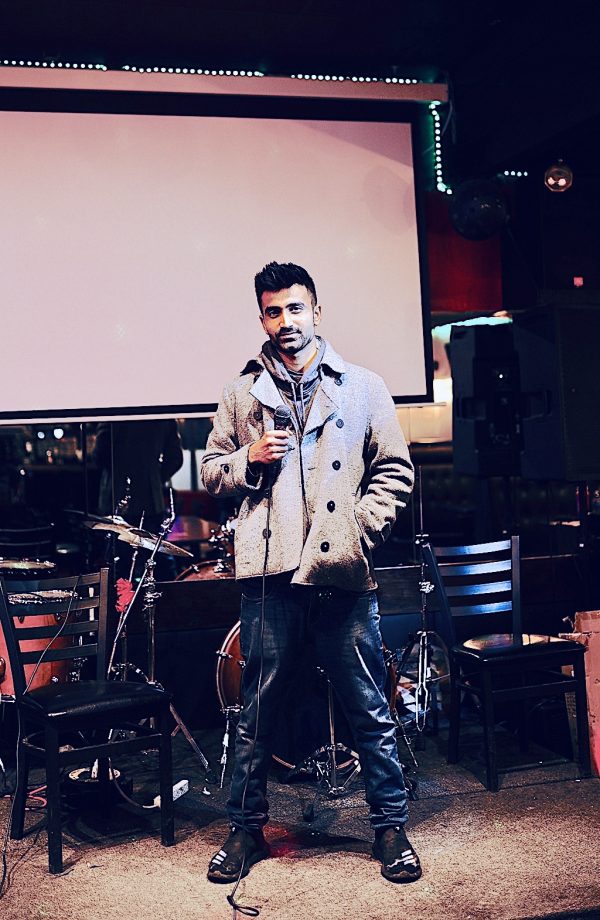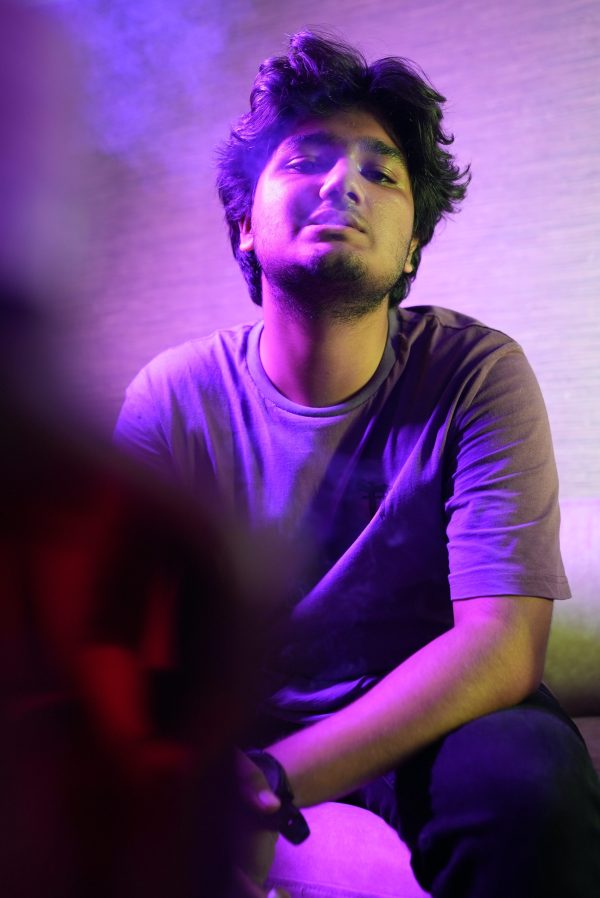Aryan Penta, better known as ARY, is a Bombay-based Hip-Hop artist who has been making waves in the underground industry with his unique style of blending making bounce and trap genres with conscious and rather introspective narratives. His latest release ‘Paisa’ talks about the effect money has on the masses. Read more to learn about the release, his inspirations and future plans!
1. Tell us about your latest release “Paisa”
The inspiration for ‘Paisa’ came from watching the busy streets of Mumbai, a place that both creates and destroys hope. The track explored themes of riches, turmoil, and social standing to portray the complex effects that money has on people’s lives. The central theme of the story was the duality of money as a source of corruption and power, particularly in a city noted for its extreme differences. I come from a simple middle-class family and throughout my life ‘Paisa’ has always been a differentiator for me in anything I did. I’m blessed to have super supportive parents cause they’ve always tried to sort me out with anything or almost everything I ask for but they too had their limitations. I wrote this track in a very trappy-boxed mindset because I just felt like I couldn’t do a lot of stuff that I wanted to because I did not have the money for it, but with music, it is different no amount of money can buy the vision and penmanship that I have and I know I’m growing with each track I work on, with ‘Paisa’ I had the chance to work with Méhti shoutout to this producer who is from Iran has to be one of the best prods doing the experimental type beats.
2. What was the creative process for this track?
‘Paisa’ gained popularity as a commentary on the role that money plays in Mumbaikars’ daily lives. It conveyed the chaos, the glitz, and the dark truth of wealth in a contradictory metropolis. Because of its experimental style which was based on actual sounds and tales and provided listeners with a sensory experience the track was an original audio excursion to the City of Dreams. While composing the track ‘Paisa’ to be very honest I was just riding with the emotions of the beat which ‘Méhti’ had so beautifully structured which made the process of composing the track smooth and it came off great. The “City of Dreams,” Mumbai, served as the perfect backdrop. The relentless pace, the glaring disparities between affluence and poverty, and the never-ending battle for financial stability provided abundant inspiration. The term ‘Paisa’, which is slang for “money,” was chosen for the title because it reflects the vernacular and has a deep emotional resonance with the region.’ Paisa’ has to be one of the best and most simple tracks I’ve made and I fuck with that no matter what anyone says I know that I delivered what I had in mind with this piece of mine and I am happy that I get to share it with the people of my city ‘Bombay’ and also the rest of India.
3. Tell us about your debut music video of “Paisa”. How does it represent the track?
I’ve always wanted to make a music video and it’s like I have finally ticked off 1 of the many things on my list of what I always wanted to do. The first music video for “Paisa” was designed to reflect the themes of chaos, money, and the harsh reality of living in Mumbai, the City of Dreams, visually. Following a youthful protagonist as he navigates the turbulent cityscape, the plot highlights both the negative aspects and the transformational power of money. The video encapsulates the spirit of Mumbai, with shots taken in a variety of visually striking and disparate settings. While we did our best to create a fast-paced cinematic that keeps the viewer engaged, we also wanted to convey the chaotic and fast-paced nature of Mumbai. From gleaming skyscrapers and affluent neighbourhoods to crowded markets and alleyways, every scene highlights the stark disparities in wealth. The rough, realistic approach of the cinematography highlights the unadulterated quality of the metropolitan setting. Rapid cuts and handheld images capture the hectic speed of city life, while expansive aerial shots emphasize how large the metropolis is. The attraction and shadows of affluence are graphically represented by the use of vivid hues contrasted with subdued tones. The protagonist encounters large sums of money halfway through the film, which is depicted in a montage of drug money, indicating the protagonist made money by forgetting his morals about working and earning the money the right way. The moral challenges posed by pursuing money are intercut with these events, as well as periods of internal strife. The video ends on a reflective note, with the protagonist standing in front of the mirror and saying, “Yeh paisa mirage hai”.This symbolises a return to self-awareness and the recognition that true worth transcends material wealth and the film ends with the voice note of a man asking, “Bambai meh sabh behre baste hai kya” to which the guy replies “Behre bhi aur andhe bhi, Inke kaan kuch nahi sunn sakte siwah rupon ki jhankar ke! , Ye Bambai hai mere bhai , yaha ek hi jotha puja jaata hai ,aur woh hai Paisa!”.
4. What are your influences as an artist?
As an Indian hip-hop artist, I take inspiration from a wide range of sources, including traditional South Asian music and hip-hop culture around the world. To list a few I’d say,
- International Hip Hop Icons for me –
- Eminem: His unadulterated feeling, narrative skill, and socially aware rhymes have greatly impacted my approach to theme depth and poetry.
- J. Cole: I want to make music that speaks to social and personal realities, and his reflective lyrics and emphasis on honesty speak to me deeply.
- Kendrick Lamar: His adaptability, creative production choices, and capacity to address complex societal concerns while retaining an appeal to a broad audience have had a significant influence on my choice of music.
- Contemporary Desi Artists –
- Prabh Deep: His experimental sounds and socially conscious lyrics encourage me to push boundaries and address complex societal issues through my music.
- SeedheMaut: Known for their intricate wordplay and vivid storytelling have inspired my focus on lyrical complexity and narrative structure.
The list can go on, but to conclude I’d say these are the guys that have influenced the way I look at things around me and appreciate them a lot better. By incorporating these many influences, I hope to produce a distinctive sound that honours the origins of hip-hop and my cultural background while also pushing the genre’s bounds and capturing the complexity and depth of the Desi experience.
5. How did you get into Hip-Hop? Tell us about your initial releases.
Well, I got into hip-hop in the very early 2010’s. It was my brother who introduced me to Tupac and Eminem, and I distinctly remember that he had them on his pen drive. Later on, I discovered even more tracks that were introduced to me by my sister, and there was this thing that we three used to do. There was this BPM challenge of Rap God, so we used to try to match Em’s pace, which I don’t think is possible because he ain’t human for sure; he’s just built differently. Fast forward to 2021. It was me and a couple of my friends chilling on our terrace at night with a speaker, and there was this guy who pulled up in Crocs and a Seedhe Maut tank top. That was my first interaction with Keshav, aka Bhaktaaa. He was actually the one who really showed that there was a proper culture of hip-hop that was budding in India, which I was partially unaware of as I knew it existed because of big names like Naezy and Divine, but I didn’t really follow that wave of hip-hop. That’s how I got into the Desi hip-hop scene; I stuck with it because I actually enjoyed it and it felt like home. I actually did drop my first-ever track, which got around 2k streams, and I dropped it on December 24th, 2022. This single was titled “Wrong Love.” Well, well, you won’t find it anywhere except my SoundCloud because I took it down because I thought it was a good track, but I didn’t do justice to it, so I took it down in the hopes of remastering it with proper planning and re-uploading it. As I write this, I can say the time for “Wrong Love” to be remastered has come, and you can expect an announcement regarding it in the coming month.

6. What is that one benchmark you want to set with your music? What is success for you?
In order for my music to carry me on forever, I hope to have a strong presence in the music business over a long period of time. Eventually achieving financial stability through music would also be one of my milestones or ambitions, allowing me to pursue my passion while earning a living. To the second query, musical success can be very individualised and subjective, differing widely among musicians. It means being able to create music that, for me, authentically expresses my feelings and vision while emotionally connecting with my audience and bringing them comfort, happiness, or inspiration. A platinum plaque has always been a goal; hopefully, we will soon achieve this goal.
7. What are your future plans?
As of now, I just want to focus on making some good music with some of my own people and sharing it with everyone as soon as I can. I also plan to make better visualizers and music videos whenever I get the chance to do so again. I also plan to perform at a few gigs once I get a chance so that I can get a better understanding of what kind of music people enjoy listening to and gain clarity on whether it’s something I would enjoy making. Something that I also plan for the future is to own a proper studio setup soon so I can make more demos.





